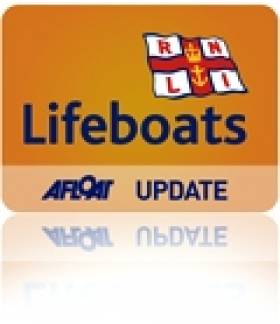Displaying items by tag: Eileen Savage
Fenit RNLI to name new D Class Lifeboat after Bangor Couple
A special naming and dedication ceremony will be held this Saturday (25 September 2010) at 3.00pm when volunteer lifeboat crew and supporters with Fenit RNLI lifeboat station in Kerry will gather to name their new IB1 lifeboat Bradley and Sonya. The lifeboat is being named in memory of Bradley and Sonya Burns, who were volunteers with Bangor RNLI lifeboat crew and who tragically died within 10 months of each other in 2006.
The lifeboat has been funded through an appeal set up by Bangor RNLI, who felt that the most appropriate way to honour the couple was to purchase a lifeboat and name it after them. This lifeboat has now been put on service in Fenit, County Kerry. It will be named by Mrs Mary Connolly and Mrs Eileen Savage, the mothers of Sonya and Bradley and twenty- five members of Bangor lifeboat crew will travel down from Northern Ireland to attend the ceremony.
The cost of the new D class lifeboat is €39,000. This type of lifeboat is built for launching quickly and operating close to shore. It is five metres in length and can reach a maximum speed of 25 knots. It can take two or three lifeboat crew and has room for five survivors. It will join Fenit's all weather Trent class lifeboat.
Sonya's sister Judy Connolly and Bangor RNLI helm Kyle Marshall will deliver the lifeboat into the care of Fenit lifeboat station.
All are welcome to attend.
Related Safety posts
RNLI Lifeboats in Ireland
Safety News
Rescue News from RNLI Lifeboats in Ireland
Coast Guard News from Ireland
Water Safety News from Ireland
Marine Casualty Investigation Board News
Marine Warnings























